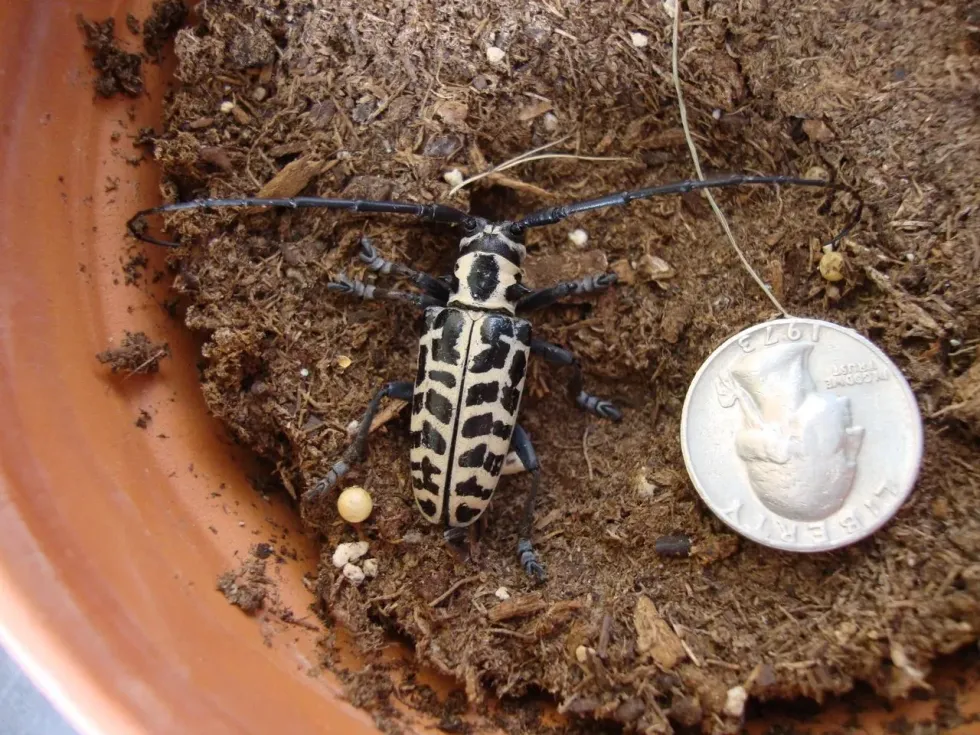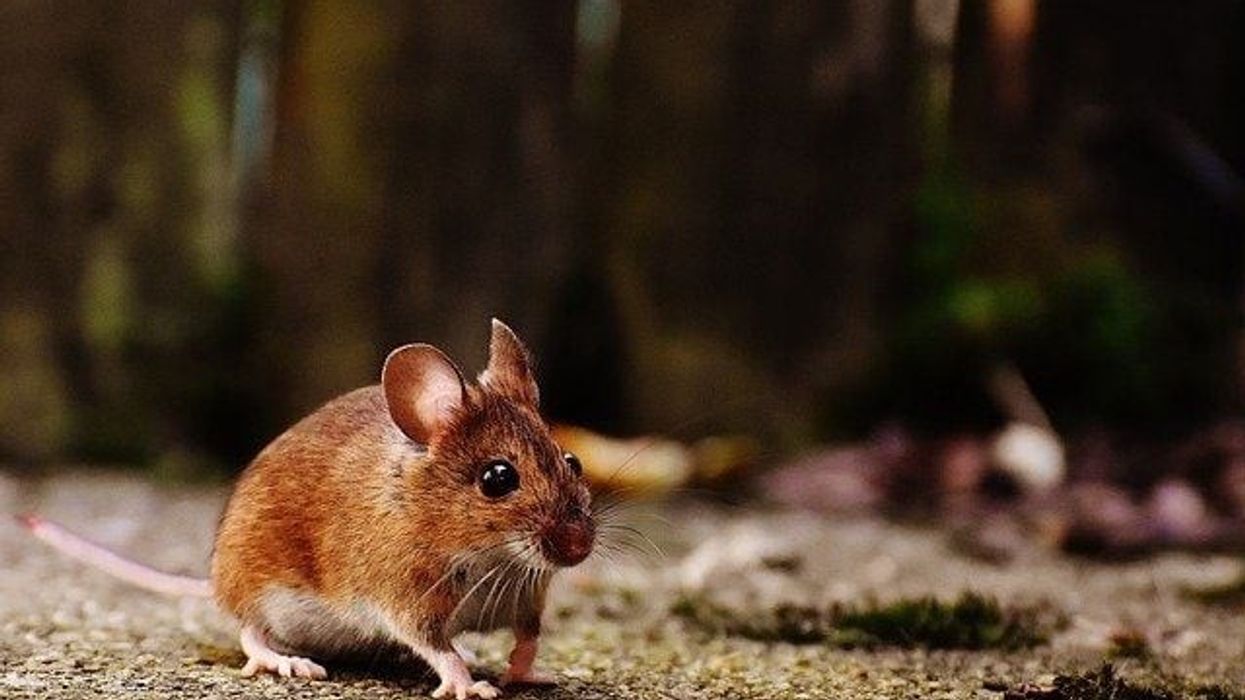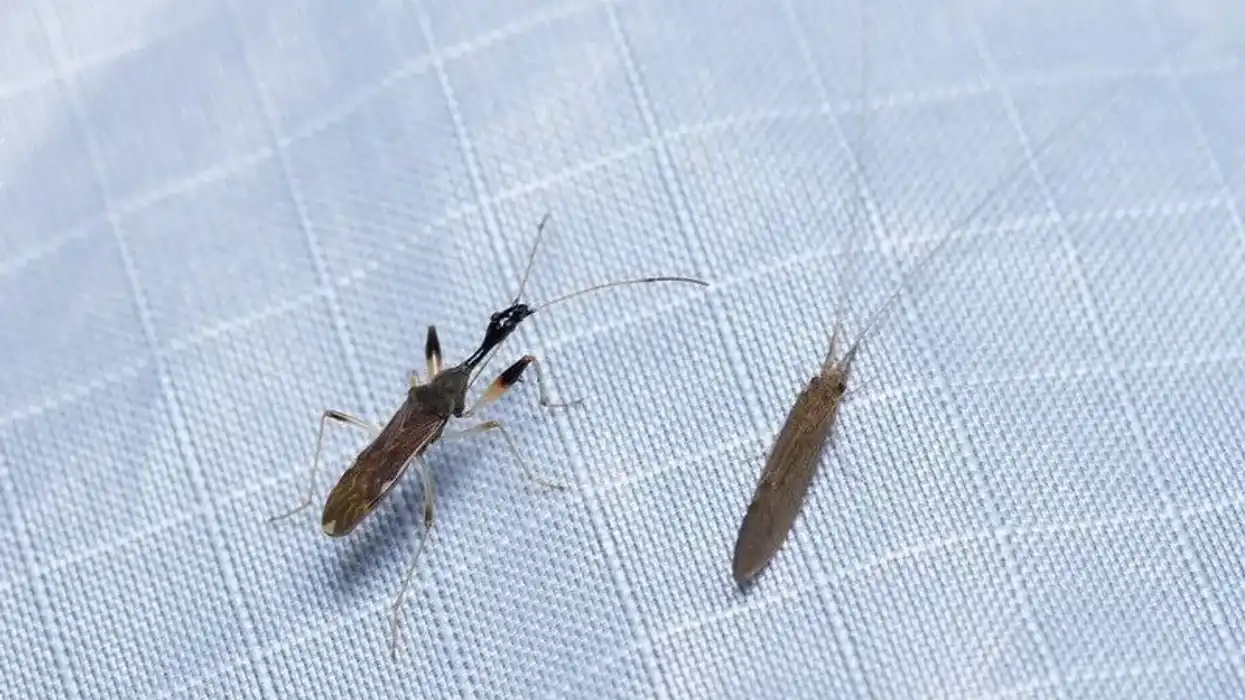The cottonwood borer (Plectrodera scalator), a common wood borer of poplars and cottonwood, is known for infesting the roots and bases of living trees. They are widely distributed throughout the Midwest and eastern United States.
However, they are most commonly found in the Great Plains from South Dakota to Texas and in the Mississippi River Valley. In Colorado, this species is restricted to the state’s southeastern portion. The adult cottonwood borer is a robust, strikingly patterned, and elongate beetle that is about 1-1.5 in (2.5-3.8 cm) long.
There are a lot of pestering insects that can adversely affect cottonwood trees, but there is none more insidiously destructive than the cottonwood borer.
You may also check out our fact files on the longhorn beetle and golden tortoise beetle from Kidadl.
Cottonwood Borer Interesting Facts
What type of animal is a cottonwood borer?
A cottonwood borer (Plectrodera scalator) is a type of beetle.
What class of animal does a cottonwood borer belong to?
The cottonwood borer of the genus Plectrodera species belongs to the Insecta class.
How many cottonwood borers are there in the world?
There is no accurate data about the number of cottonwood borer beetles in the world.
Where does a cottonwood borer live?
Cottonwood borer beetles usually infest cottonwoods, but can also be found on willow and poplar trees. The larvae of these beetles can chew tunnels around the roots to create calories below or at the soil line.
They are packed with grass and wood shavings which are also signs of damage in an infected tree. The adults live on the same tree, but during the daytime, they can be found higher on the host plant.
These adults can be found throughout central and eastern regions of the United States. However, the highest population is in the south. Even though they are found as north as Washington D.C, they are absent from Florida and the Carolinas.
What is a cottonwood borer's habitat?
The cottonwood borer (Plectrodera scalator) lives in cottonwood trees which requires a location with lots of moisture and full sun. They grow well near rivers and lakes and in marshy areas. These trees prefer silty or sandy soil but can tolerate anything that has heavy clay.
Who do cottonwood borers live with?
We cannot determine whether these beetles prefer living in groups or alone.
How long does a cottonwood borers live?
The lifespan of a cottonwood borer beetle (Plectrodera scalator) is one month.
How do they reproduce?
The reproduction process for cottonwood borer beetles depends on finding an appropriate host tree. The male cottonwood borer uses pheromones for locating females. Male adults mount the female immediately. Large females are usually not selected as mating partners.
Males and females of the cottonwood borer beetles species only interact during mating when the males defend their partner aggressively from other males.
The male adults who haven’t found a partner will try dislodging a paired female and male during copulation and removing the rival male’s sperm. The paired male then grabs their rival’s antenna using their strong mandibles to defend themselves and stop the rival from removing them.
After the mating is completed, the males will continue to guard their females to make sure that no one removes their sperm before the eggs are fertilized.
Adult insects emerge from mid May to early June and feed briefly. During this time, the females descend to the tree's base where they start gnawing small puts in the bark or roots.
They deposit their eggs in these niches which hatch after 16-18 days. Once the egg is hatched, the larvae will bore downward inside the inner bark and create large pupal chambers.
The development can take one to two years, but the pupation will occur in the gallery for three weeks between April and June. The new adults will chew exit holes on the sides of the pupal chambers on the bark, emerge through the soil, and start the life cycle again.
What is their conservation status?
Cottonwood borer insects are Not Extinct.
Cottonwood Borer Fun Facts
What do cottonwood borers look like?
Cottonwood borer beetles of the order Coleoptera are large, long-horned, robust beetles. The color of their body is black, but it is obscured by cross stripes and patches of pure white hairs surrounding their black, hairless areas.
Each side of their thorax has a strong spine and their antennae are almost as long as their body, even longer in males. The larvae of this species are yellowish-white, legless, moderately robust, and elongate.
How cute are they?
Cottonwood borers are not considered a cute species.
How do they communicate?
We do not have information on how these insects communicate with one another.
How big is a cottonwood borer?
A cottonwood borer, of the order Coleoptera, can be between 1-1.5 in (2.54-3.81 cm) long.
How fast can cottonwood borers move?
We do not know how fast these beetles move.
How much does a cottonwood borer weigh?
We don't know the exact weight of this species of beetles, but they will quite lightweight as they are small.
What are the male and female names of the species?
The name for a male and female cottonwood borer beetle is the same.
What would you call a baby cottonwood borer?
There is no specific term for a baby cottonwood borer beetle.
What do they eat?
Adult cottonwood borers eat tender shoots of young cottonwood, willow, and poplar trees. This often causes the shoots to start shrivelling and eventually breaking off, causing damage to the host tree. The larvae feed on the tree's inner phloem.
Are they harmful?
Cottonwood borers are known to have quite strong mandibles. Handling them carelessly might lead to a painful cottonwood borer bite.
Would they make a good pet?
No, they don’t make a good pet because of their infestation nature.
Did you know...
Cottonwood borer beetles, phylum Arthropoda, can attack trees of all sizes. The adults of this species can infest the nursery stock which causes young trees to shrivel and die.
Even if they survive, the trees might break at the root collar. It is hard to detect the harm done to older trees unless the soil is removed exposing the upper roots and root collar. The cottonwood borer larvae can bore into the infested tree's heartwood.
In plantations, infested trees are riddled with larvae, but only in rare cases die from the injury. Most infested trees break at the base because of wind streaks.
How to get rid of cottonwood borers?
As their name suggests, the cottonwood borer beetle is especially harmful to the cottonwood tree. They can also infest willows and poplars.
Their larvae tunnel around the roots and crown of trees which can damage and even kill young trees. While the larvae infestation won’t kill an adult tree, it can definitely compromise its structure making the tree more susceptible to wind strikes. Adult beetles feed on tender bark and leaves, leaving behind spotty damage to the cottonwood tree.
The best way to prevent an infestation by this insect species is to plant cottonwoods properly. To avoid pest infestation, the trees should be planted in conditions where pests don’t thrive.
Cottonwoods grow very quickly and can easily become 100 ft (30 m) tall. To ensure that they reach this height, early planting is recommended. Cottonwood trees should not be used for residential planting.
Even though they are an adaptive tree, they do best in well-irrigated and moist soil. Keeping invasive vegetation like weeds away from the tree during its early development will help in its strength and growth and also increase its ability to withstand the effects of an infestation.
To eradicate cottonwood borers, one needs pesticide treatment. Since this species has only a few natural predators, you will have to eliminate the pests through this treatment.
Apply insecticidal soaps to control the larvae. You can also use insecticides that have permethrin in them as it prevents adult beetles from laying their eggs. It is recommended that you saturate the soil at the base of the tree to eliminate the grubs that are burrowing there.
Larvae can continue living beneath the earth’s surface for years, revealing almost nothing of the destruction that they have caused. You have to make frequent soil checks to ensure that there is nothing in the soil.
Do cottonwood borers fly?
When spooked or provoked, adult beetles can fly.
Here at Kidadl, we have carefully created lots of interesting family-friendly animal facts for everyone to discover! Learn more about some other arthropods from our ambush bug facts and ten-lined June beetle facts pages.
You can even occupy yourself at home by coloring in one of our beetle coloring pages.









